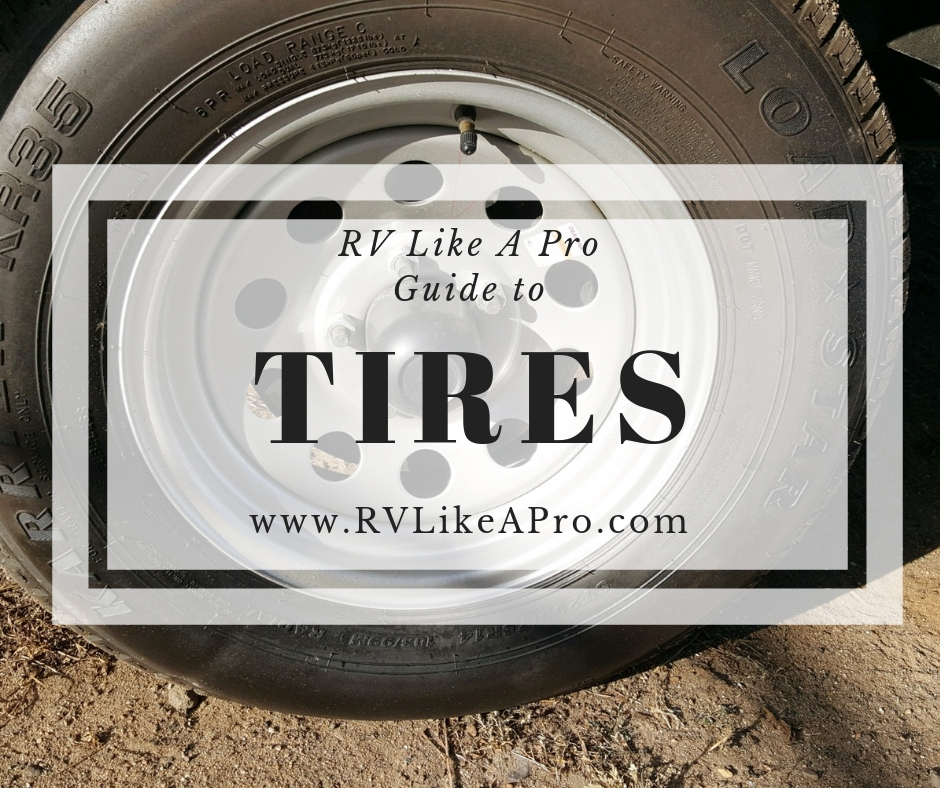
RV Tire Guide
Tires are an extremely important part your RV but they are often overlooked. A perfectly planned trip can be ruined in an instant if you are traveling on bad tires. Not only that, you could lose your life in a serious accident. As an RV technician I am not an expert on tires, but after a lot of experience and speaking with several people who are, we have compiled some tips that everyone should know to travel safer. Don’t worry, we know it can get confusing and we will keep it pretty simple.
Some of the links below are affiliate links, meaning, at no additional cost to you, I will earn a commission if you click through and make a purchase.
Determining a Safe Tire
Age
Age of a tire is the first factor to consider when deciding if it is save to travel on. As a general rule, you should consider replacing your tires after 6 to 8 years. Tires older than 8 years are considered old and could malfunction.
Dry Rot
Dry Rot is cracking on the sidewall and even the tread of the tire. You may have experienced rubber dry rot in a garden hose that has been left in the sun. It becomes very brittle and can break. The same thing can happen to your tire. This could lead to a catastrophic tire failure. If you see cracking or dry rotting anywhere on a tire you should replace the tire before you move the trailer.
How do I protect my tires from dry rot? We recommend you cover your tires, when possible, to protect them from dry rotting in the Sun. Camper tires often need to be replaced due to dry rot rather than due to the tread being worn out from traveling. I recommend canvas tire covers that take up very little space in your compartment. These covers go on quickly and easily.
You could also use something as simple as plywood cut in the shape of your wheel that will keep the sun off your tires.
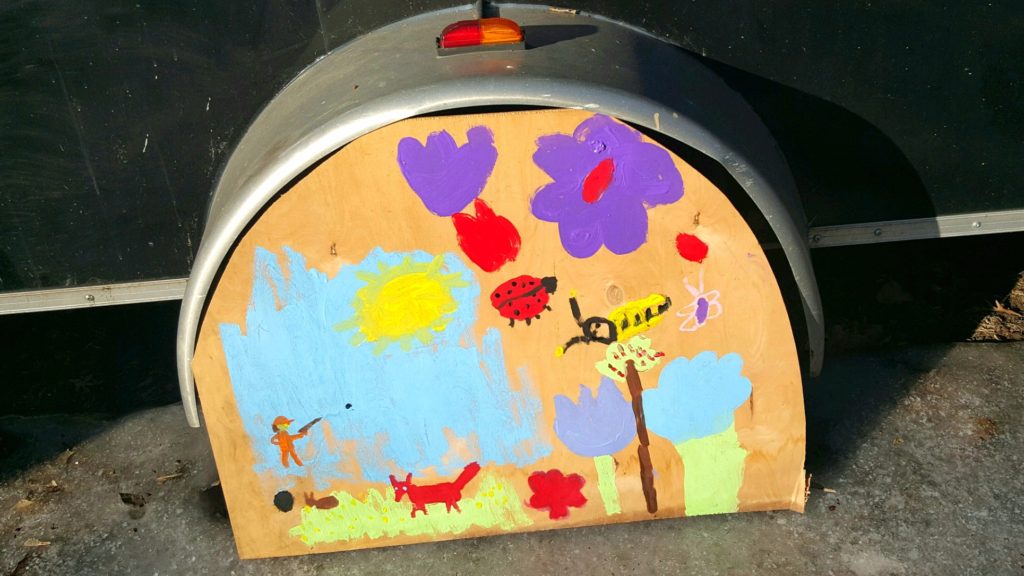
If you pull your trailer frequently I wouldn’t worry about covering them because you will wear the tread out before they dry rot.
You should also be sure to cover your spare tire that’s hanging on your bumper or laying in the back of your pickup truck bed exposed to the sun.
Tire Wear
Tire wear is in regard to the amount of tread that is remaining on a tire. As a general rule you should be able to put a penny in the tread and not see the top of Abraham Lincolyn’s head. If you can, then you should look to replace the tire.
What causes unusual wear in an RV tire? In the case of a trailer tire, your camper should travel level down the highway. For example: if you have dual axles, and the front end of the trailer travels higher than the rear it will put more weight on the rear axle causing those tires to wear quicker. To prevent this you will need to adjust your trailer hitch or 5th wheel height. Your service technician will be happy to help with this.
Also, try not to cut corners tires so tight that the tires run up on the curb. Tires are often damaged by this and susceptible to blowouts later.
Tire Inflation
When the tire is inflated properly you get the best performance and gas mileage out of that tire. Under-inflated tires tend to wear on the outsides of the tire. Over-inflated tires tend to wear in the center of the tire all the way around.
You should inflate your tires when they are cold.
What should I inflate my tires to?
PSI stands for “pounds per square inch”. The wall of the tire will tell you the recommended PSI for that tire. Follow the PSI weight on the tire. Even if the trailer has a sticker recommending tire PSI we recommend that you follow the actual tire recommendation. The reason is simple, the tire manufacturer knows tires. Plain as that. Also, many people replace the tires on their trailers to something more “robust” thus making any trailer PSI recommendations meaningless.
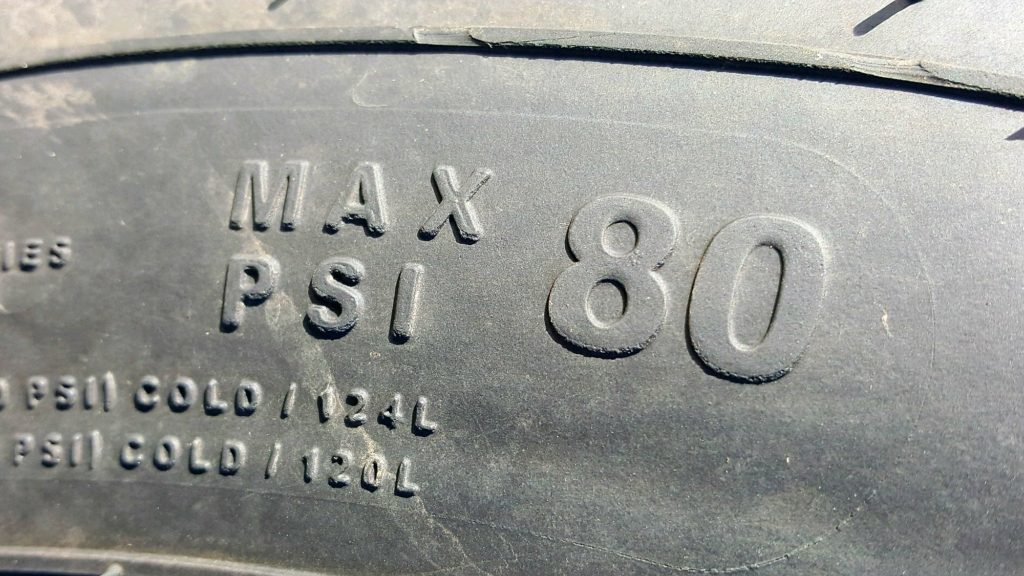
If the tire says “Max load 1760 lb at 65 PSI” on the side of your tire it means that the tire can hold 1760 lbs when the tire is inflated to 65 PSI. We have more on how to read a tire wall later in this article.
What if I under-inflate my tire?
If you under-inflate a tire it cannot hold the same amount of weight that it was designed to hold. For example, if you UNDER-INFLATE the trailer tire and then OVERLOAD the under-inflated tire, the tire sidewall can heat up and cause the tire to fail. Usually this means a tire blow out.
In addition, when turning a dual axle trailer, the under inflated tire can roll on the sidewall damaging the sidewall of the trailer tire. If a blow out occurs on a double axle trailer, you will most likely feel a small “shudder” at the steering wheel. If you do not notice the tire blew you will likely notice pieces of tire coming from under the trailer. The blown tire will usually take out the plastic fenders and probably some of the bottom trim on the camper’s sidewall (called J-wrap) and even damage the sewer pipes as the tire comes apart.
A blowout in a single axle trailer could cause A LOT of damage to the trailer’s undercarriage. Often the wheel shears off the lug nuts causing the trailer to drop onto the hub which can also damage the entire brake assembly.
In both of these cases the worst case scenario is that the compromised trailer can drag the tow vehicle (and you) into the ditch or oncoming traffic.
Nitrogen inflated tires
Tires filled with nitrogen usually have a green cap on the air stem. The reasons to use nitrogen to fill tires is because nitrogen has bigger molecules than air and thus will not bleed through the tire and deflate as quickly as air filled tires. Nitrogen also does not expand and contract as much as regular air with changes in temperature. Finally, nitrogen stays cooler than air while you travel.
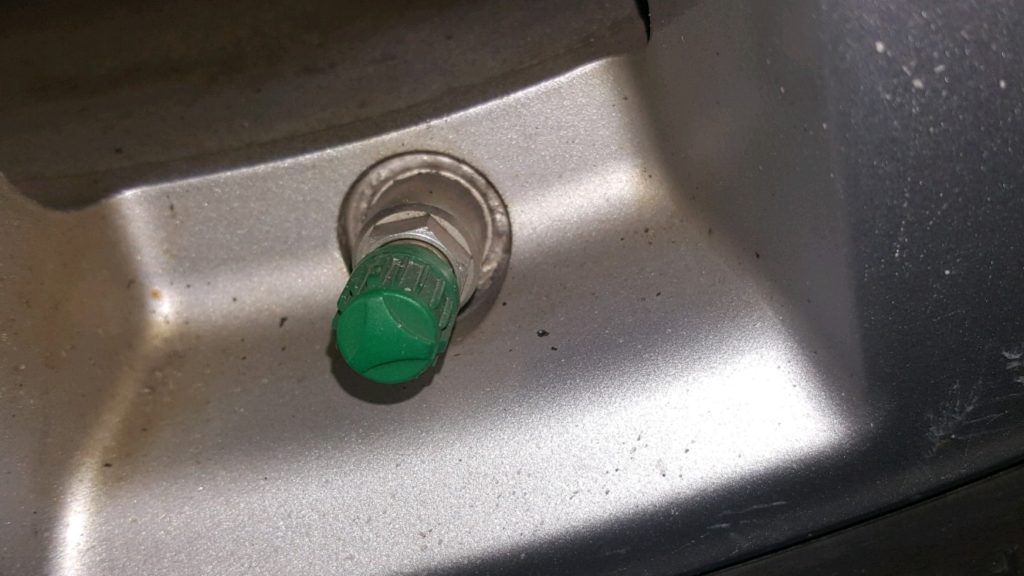
Something to note is that it is perfectly safe to mix air with nitrogen. If you find you are in an area that does not have nitrogen, and your tire is low, go ahead and put regular air in it. Then, when you get to a service station where nitrogen is available, the servicemen can purge the air out of your tire and replace it with nitrogen.
Tire Monitors
Tire monitor systems send the signal to the inside of your vehicle letting you know if you have a tire dropping in pressure lower than recommended. A lot of people with motor homes (class A, B, or C) and fifth wheels use tire monitor systems.
How to Read a Tire Sidewall

ST235/80R16
ST stands for “Special Trailer”. These tires are only to be used on trailers.
Other tires may have LT – for “Light Truck” P – “Passenger” or T – for “Spare Tire”
235 is the width of the tread.
80 refers to the height of the tire’s sidewall.
R stands for radial construction. This means that the tire’s layers run radially across the tire.
Another tires may have a “D” which stands for diagonal bias construction, where the tire’s layers run at angles lower than 90 degrees.
16 Indicates the diameter of the wheel of on which the tire can be mounted on. Our example tire has a wheel diameter of 16, meaning that it will fit on a 16-inch wheel.
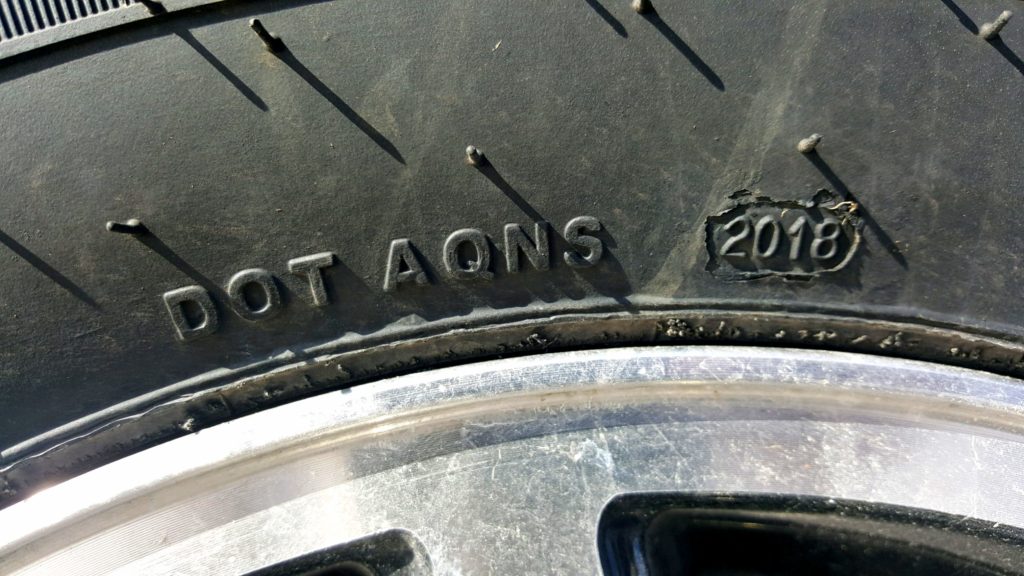
DOT AQNS 2018
DOT stands for “Department of Transportation” and means that the tire meets the Department of Transportation’s requirements for road use.
AQ is the “plant code” and indicates where the tire was constructed.
NS refers to the “size code” as determined by the manufacturer.
20 means the tire was made in the 20th week in the year it was made.
18 means the tire was manufactured in the year 2018.
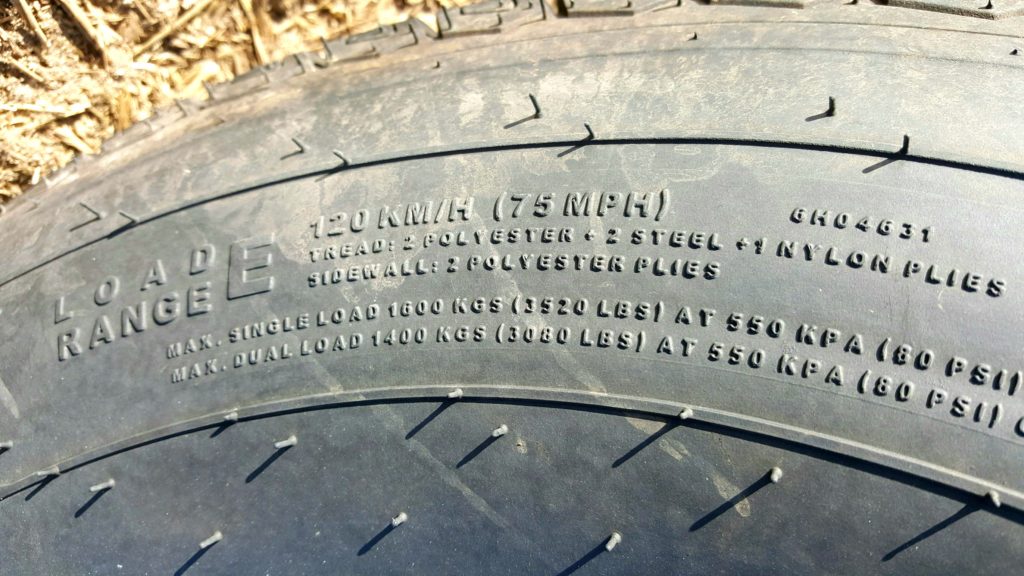
Load Range E
Load Range E refers to an alphanumeric index code that indicates how much weight the tire can hold at maximum air pressure. This particular tire has a maximum load of 3520 lbs when it is being used on a single axle trailer (2 tires = 7040 max load). If this tire was being used on a dual axle trailer it has a maximum load of 3080 lbs (4 tires = 12320 max load).
To give you some insight on how these ratings work, the farther back in the alphabet the letter is the more weight the tire can carry.
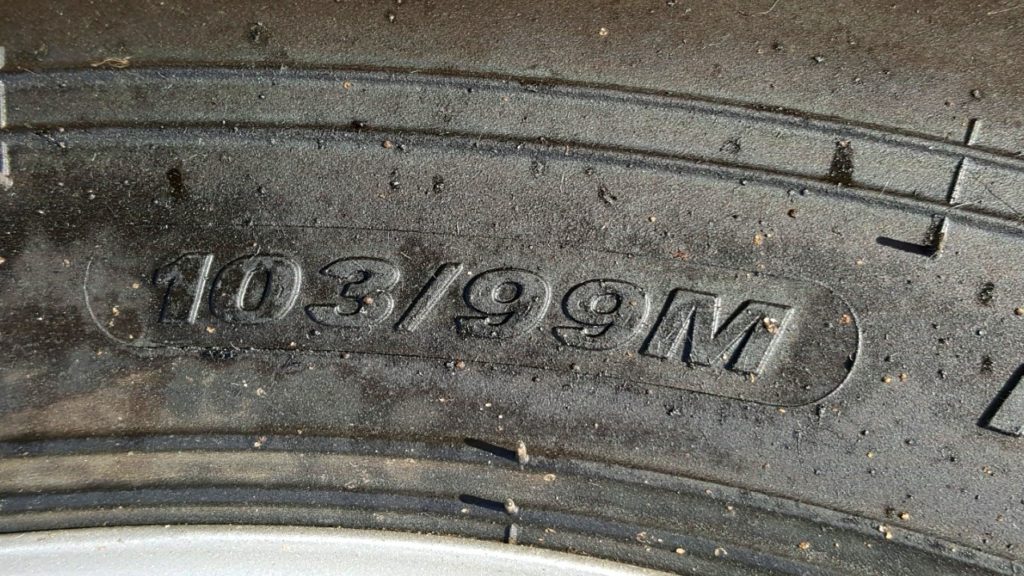
103 This tire has a numeric index code of load rating of 103 which corresponds with 1929 lbs
Below is part of the numeric Index Code.
| Load Index | Carrying Capacity (lbs) | Load Index | Carrying Capacity (lbs) |
| 100 | 1764 | 125 | 3638 |
| 101 | 1819 | 126 | 3748 |
| 102 | 1874 | 127 | 3858 |
| 103 | 1929 | 128 | 3968 |
| 104 | 1984 | 129 | 4079 |
| 105 | 2039 | 130 | 4189 |
| 106 | 2094 | 131 | 4289 |
| 107 | 2149 | 132 | 4409 |
| 108 | 2205 | 133 | 4541 |
| 109 | 2271 | 134 | 4674 |
| 110 | 2337 | 135 | 4806 |
| 111 | 2403 | 136 | 4938 |
| 112 | 2469 | 137 | 5071 |
| 113 | 2535 | 138 | 5203 |
| 114 | 2601 | 139 | 5357 |
| 115 | 2679 | 140 | 5512 |
| 116 | 2756 | 141 | 5677 |
| 117 | 2833 | 142 | 5842 |
| 118 | 2910 | 143 | 6008 |
| 119 | 2998 | 144 | 6173 |
| 120 | 3086 | 145 | 6393 |
| 121 | 3197 | 146 | 6614 |
| 122 | 3307 | 147 | 6779 |
| 123 | 3417 | 148 | 6844 |
| 124 | 3527 | 149 | 7165 |
99M (Note the M) This number refers to the maximum speed recommended for this tire. Below is part of a chart with those recommendations. In the case of the tire shown above it is recommended that it travels at a maximum speed of 81 miles per hour.
| Speed Rating | Maximum Speed |
|---|---|
| B | Up to 31 mph |
| C | Up to 37 mph |
| D | Up to 40 mph |
| E | Up to 43 mph |
| F | Up to 50 mph |
| G | Up to 56 mph |
| J | Up to 62 mph |
| K | Up to 68 mph |
| L | Up to 75 mph |
| M | Up to 81 mph |
| N | Up to 87 mph |
That’s it! Hopefully now you have a better understanding of how to read a tire and what to look out for when doing a pre-travel check of your trailer. Please keep in mind I’m not an expert on tires and you would be wise to consult an expert when replacing your tires.
Happy camping!



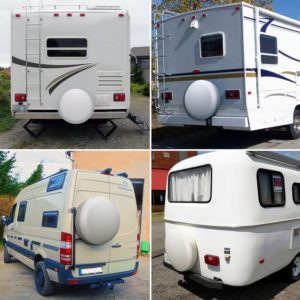
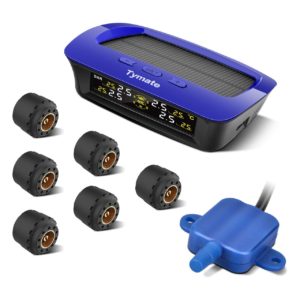
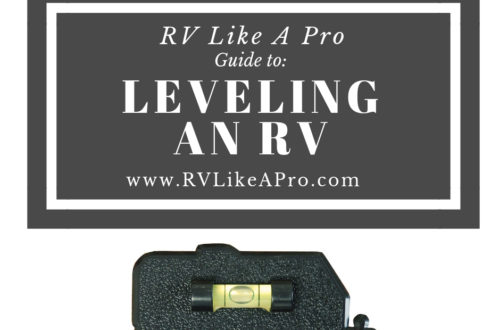
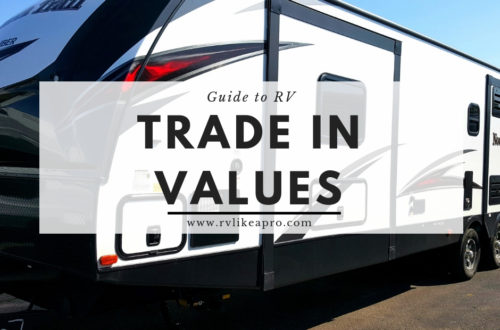
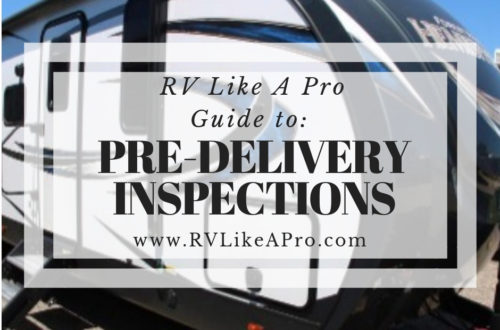
28 Comments
Bettye
This is SUCH good information! I’m the queen of flat tires and am always concerned when filling with air that I’m overfilling and the tire is going to explode and burn my face, ha! I’m not an RV-er but I’m still bookmarking this info to help me keep better care of my vehicle. Thanks for sharing!
Bettye
https://fashionschlub.com
Holly Bird
Thank you so much! Not only is this good info for RV’s but any vehicle tire! I always appreciate the information on you blog..it is the best for any RV’er!
Meagan
Wow! This is a lot of info!
I think it’s so cool how your family does this.
Katie
Great reminder to check the tires on your RV! I think it is time we changed ours.
Angela Greven
Wow, what an informative post for anyone with wheels! Seriously the best info out there on proper care and maintenance of RV’s and vehicles! Two thumbs up! 👍👍
Anna
I should pass the article to my husband. He will surely benefit from it with his car business.
Tricia Snow
This is really good advice! I was super picky about my tires. It is a different thing altogether when you are hauling 15k lbs including 4 high dollar show horses and a tire goes out.
Ivy | livin the life of ivy
Thank you so much. This is very informative.
Pauline
Yay!! We have had two blow outs with our trailer. I showed this to my husband so there won’t be a next time…
Leigh Ann
I love the tire cover painted by your daughter! Lots of great info here too.
Dina Ferguson
There is a lot more to RV-ing than I knew! My husband is always telling me we need to try it, I’ll have to have him read your blog 🙂
Junell DuBois
Wow Who would have thought you’d have to put so much into tires! I sure hope people new to the RV world find this blog because you are a wealth of information.
Ramae
Wow, what an informative post! I don’t own an RV, but I hope to one day. I never knew how to read a tire before reading your post, so thank you!
Sandi Barrett
I never knew tires could rot – but then, I don’t really know much about tires. Thanks for all the great info!
Rachel Newlon
I never once thought about the fact that when a vehicle sits, the tires can easily wear. I automatically think tread and forget about them just sitting and potential rot!
Brittany
You always bring such a wealth of information! I love your visuals too
Michele Vadnais
Such great information! You guys always make me think “we should get an RV!”.
Stacey
Great info! I actually had no idea you could put nitrogen in tires. I also love the plywood tire cover!
Janine
I love the plywood painted tire cover!
Kathryn at QuestFor47
Amazing resource! I know so many people who don’t even know about their regular tires. This is so important!
Cindy
Great info about proper care of tires. I don’t have an RV but I own a car. Good stuff to know.
Dawnmarie @ EnjoyingtheDays
My favorite part of this article may be learning about the codes on the tires. It is like learning about codes on our groceries in that knowledge can prove to be beneficial! While I did know about having enough air in the tires, I also appreciate the reminder!
Jennifer Morrison
I have heard of people using Nitrogen but never knew why. Thanks for sharing this. We have a chronic air leak on our Jeep, so I will try some of these tips.
Susan Franklin
Oh my goodness, I learned so much about reading tires – I had no idea! Great information, especially for those who RV regularly!!
Shirley Florence
Tires are so important and I thing a lot of people over look. Thanks for the informative post!
Carmen
Hadn’t even thought about the importance of tire maintenance on my RV. Thanks for all the info!
Kat
This is great information that anyone who drives ANY car should know, especially if you are traveling distance.
T.M. Brown
I never thought to cover the tires! Wow – once again, learning something new. Love the creativity on the plywood.